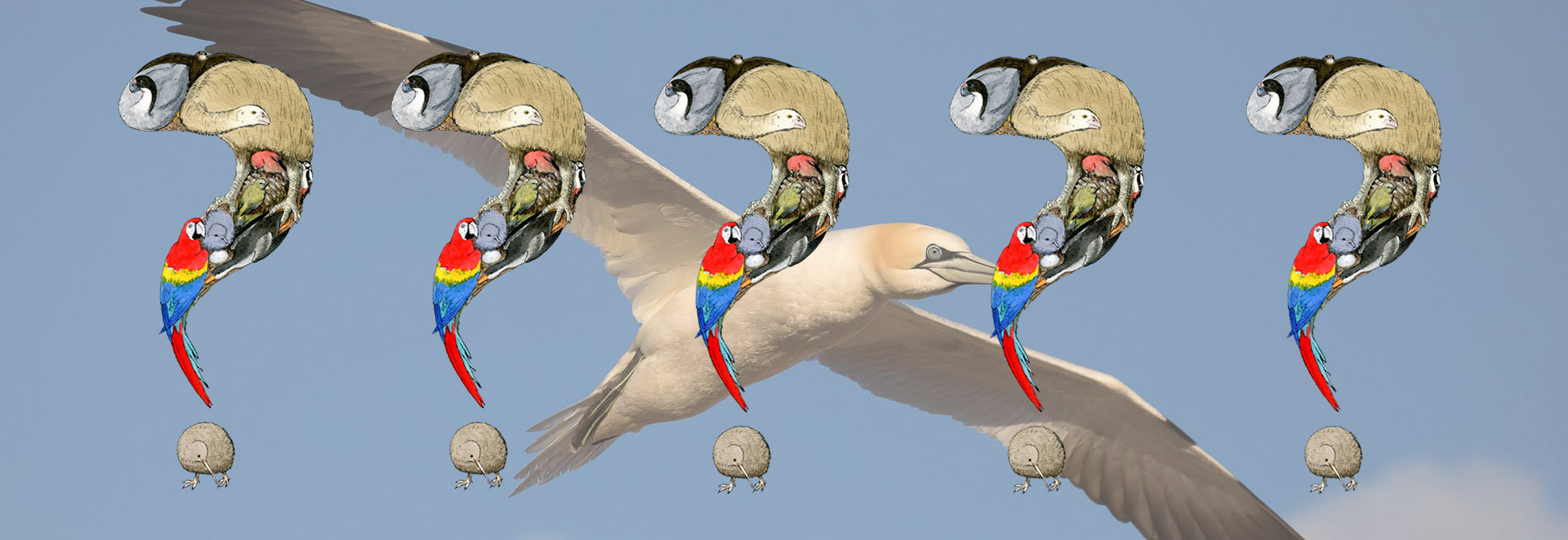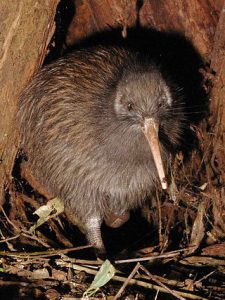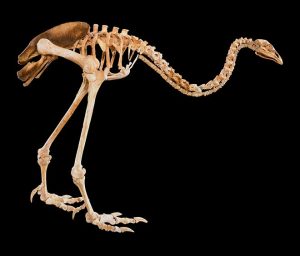 Photo: Sebastià Torrens. Question marks: Aina Bonner
Photo: Sebastià Torrens. Question marks: Aina Bonner
Solution to Challenge 1
OPTION A. There are birds that have lost their flying ability (“flightless birds”), and even there are some birds that have completely lost their wings (e.g, moa, Hesperornis). Despite not having them, they are still birds.
OPTION C. There are also birds that do not have complex feathers (e.g., the kiwi, which have feathers so simple that they look like hairs; or the moa). Despite not having them, they are still birds.
OPTION B. However, there is no a bird that does not have hindlegs. Not even swifts (belonging to the Order Apodiformes, meaning “without feet”) and hummingbirds, which have, both them, very small but functional hindlimbs, with functional feet. They allow them perching on twigs or electricity wires.
Therefore, the correct answer is B.
A. Skeleton of an Upland Moa, a case of a bird without wings. From: https://teara.govt.nz/en/photograph/11380/upland-moa-in-correct-stance. Upland Moa, Megalapteryx didinus, collected March 1987, Honeycomb Hill, Enduro, Map Grid 1385N 720E, New Zealand. Field Collection 1982-1988. CC BY 4.0. Te Papa (S.023700)

C. Apteryx mantelli, an example of a bird without complex feathers. From: Wikipedia

B. This is the most similar to a bird without hind limbs
[This challenge could have been presented in a similar way for mammals. So, although it is a mammalogical topic, I leave it to you to think:
What is more important for mammals?
- The fore limb
- The hind limb
- To have hair
- To give birth to living offspring]
Possession of hind limbs is one of the two fundamental characteristics of birds pointed out by Gay W. Kaiser in his excellent book on the natural history of birds, a book I will turn to on several occasions throughout AVIENIGMA.
The other key feature is that almost none of the visible parts of the birds are alive. The body of birds is coated with keratins, proteins that constitute dead excretion from the skin. Even the surface of the eyes is formed by a layer of transparent keratin …
Reference:
KAISER, G.W. 2007. The Inner Bird. Anatomy and Evolution. University of British Columbia Press, 386 pages

